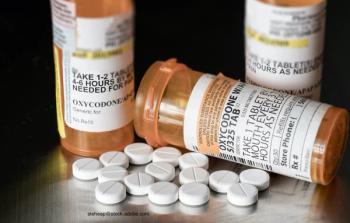
When Molecular Testing is Superior to Antigen Testing for Infectious Diseases
Providing people with the ability to test for viruses in their own homes empowers them to be proactive about their health while helping public health officials, policymakers, and researchers with information that could head off the next pandemic.
The COVID-19 pandemic dramatically exposed an existing
Testing for SARS-CoV-2 today may appear to be ubiquitous, but COVID tests are not equally accessible to all who want them. Whether that barrier is transportation, location, job schedule, childcare challenges, or fear of being swabbed, many people are not willing—or able—to travel to a testing center.
Perhaps the biggest lesson of the pandemic is the importance of preparation, prevention, and policy. One solution that would enable all three is fast, accurate, and inexpensive home testing. “Rapid and low-cost diagnostic screening of a population at risk is critical for controlling sources of infection,”
There is no reason to wait for another global pandemic to ensure diagnostics tests are readily available to anyone who needs them, whenever they need them. But even if the “current laboratory-based paradigm for SARS-CoV-2 is scalable and can be automated for high throughput,”
Molecular Testing Versus Antigen Testing
A diagnostic test can determine whether a person is currently infected with an active coronavirus and should take measures (such as quarantining) to avoid exposing others to the virus. There are two basic types of diagnostics tests. The first type is molecular testing, which detects a virus’s genetic material. The second type of diagnostic test, antigen testing, recognizes specific proteins on the surface of the virus.
Molecular tests are conducted by nasal or throat swabs and results can be available as soon as the day of testing or up to a week after. While the rate of false negatives produced by molecular tests depends on how long a person has been infected, molecular tests generate exceedingly low false positive results. In most of those cases, the inaccurate test results likely can be traced to contaminated or otherwise compromised labs.
There are several ways to conduct molecular testing, but those based on an isothermal nucleic acid amplification process are most suitable for a large-scale at-home testing initiative. This process tests for the presence of a specific nucleic acid sequence that can identify SARS-CoV-2 or other viruses and bacteria.
Using an isothermal-based point-of-care (POC) molecular testing system on 10 clinical samples, the University of Illinois researchers said it returned results in 30 minutes that fully matched results from corresponding RT-PCR tests of the same sample.
Antigen tests, also known as rapid screening tests, are conducted by throat or nasal swabs. These tests work by identifying protein fragments, or antigens, from the virus. The advantage antigen tests currently have over molecular tests is their lower cost and the amount of time it takes to get results, which can be available in less than an hour and sometimes ready in minutes. The accuracy of antigen tests, however, falls well below that of molecular tests. “Antigen tests cannot definitively rule out active coronavirus infection,” the
The Role of Home-Based Molecular Testing
As long as humans continue to live in groups, pandemics will remain unavoidable. “Pandemics are going to happen, but we can absolutely prevent the devastation that occurs from a pandemic,”
Mitigating the damage from pandemics, Mina says, requires a collaborative effort across nations to detect and monitor the spread of a virus. A proper virus surveillance infrastructure would be analogous to weather warning systems alerting people of possible extreme events such as tornadoes and hurricanes. It would allow public health officials time to develop and implement strategies to educate populations and limit the spread of a virus.
To make a global surveillance system for infectious diseases work, people need access to reliable, accurate, and inexpensive at-home infectious disease testing technology. Putting low-cost tests into people’s homes immediately removes major barriers to testing. The additional data generated by these home tests can provide invaluable information to public health officials about where and how fast an infectious disease is spreading. A home testing program could be supported by a public education initiative on how to use at-home testing devices.
Pandemics As National Security Threats
Creating a global surveillance system for rapidly identifying new infectious diseases through testing people at scale would be an enormous undertaking. Former FDA Commissioner Scott Gottlieb
“We need to look at public health through the lens of national security,” he says. “We also need to get better surveillance in place.” Gottlieb urges the U.S. to get its “intelligence services more engaged” in detecting and preventing potential infectious outbreaks.
Conclusion
The biggest drawback to antigen tests is they do not provide “actionable data” for physicians and healthcare providers. A person who is positive by an antigen test will not receive a prescription based on that type of test – they need a positive from a molecular test. Therefore, a molecular diagnostic multiplex test is required to distinguish among Flu A/B, RSV and COVID, so the patient can get the right drug for the right disease. Early intervention is key. For all of these viruses, diagnosis has to take place within 48 hours of symptoms for the drug to work.
COVID-19 has made clear that our ability to fight highly infectious diseases is heavily dependent on the widespread availability of low-cost, accurate diagnostic testing that produces quick results. This applies not only to COVID-19 and other coronaviruses, but to transmittable diseases such as HIV, sexually transmitted infections, and urinary tract infections. Further, individual test results can be used to create vast, cloud-based datasets that can track outbreaks anywhere in the world and inform public health policies.
The U.S. government is
Providing people with the ability to test for viruses in their own homes empowers them to be proactive about their health while helping public health officials, policymakers, and researchers with information that could head off the next pandemic. At-home isothermal-based molecular testing represents the best and most cost-effective option for building out an effective infrastructure designed to accurately diagnose infectious diseases and deliver treatments rapidly to best manage and control epidemics and pandemics.
About the author
Ron Chiarello, Ph.D., is Founder and CEO of
Alveo is leading the transformation of the consumer health tech market with a low-cost, easy-to-use diagnostic platform that will change the way infectious diseases are detected and managed. With an initial focus on acute respiratory infections, Alveo’s
Newsletter
Pharmacy practice is always changing. Stay ahead of the curve with the Drug Topics newsletter and get the latest drug information, industry trends, and patient care tips.























































































































